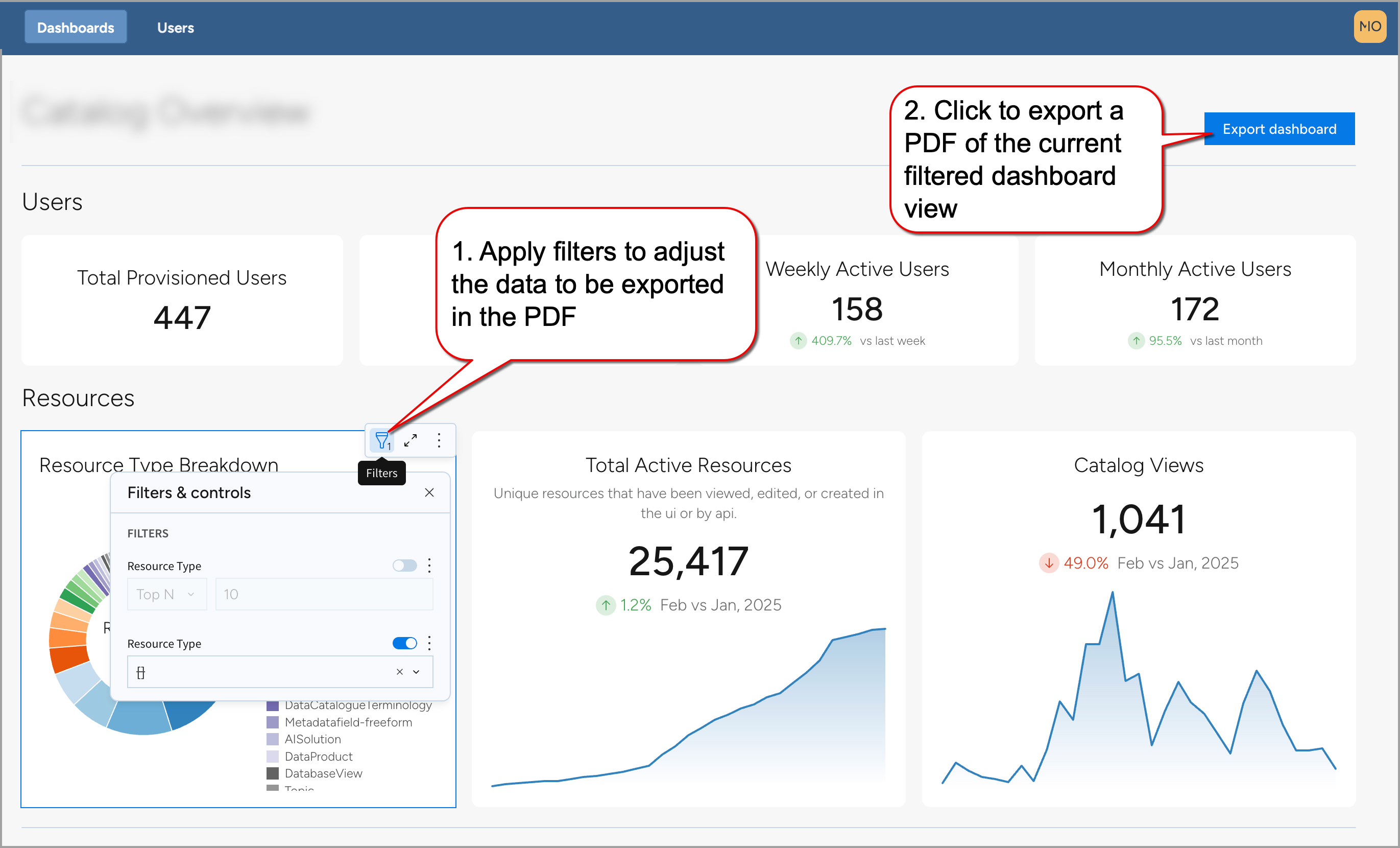Viewing search dashboards
Search Dashboards provide insights into user search behavior, trends, and performance on data.world.
Use these dashboards to:
Identify search trends over time to track engagement and detect usage patterns.
Understand user behavior and popular search terms to optimize content and improve user experience.
Optimize search performance for better discoverability and efficiency.
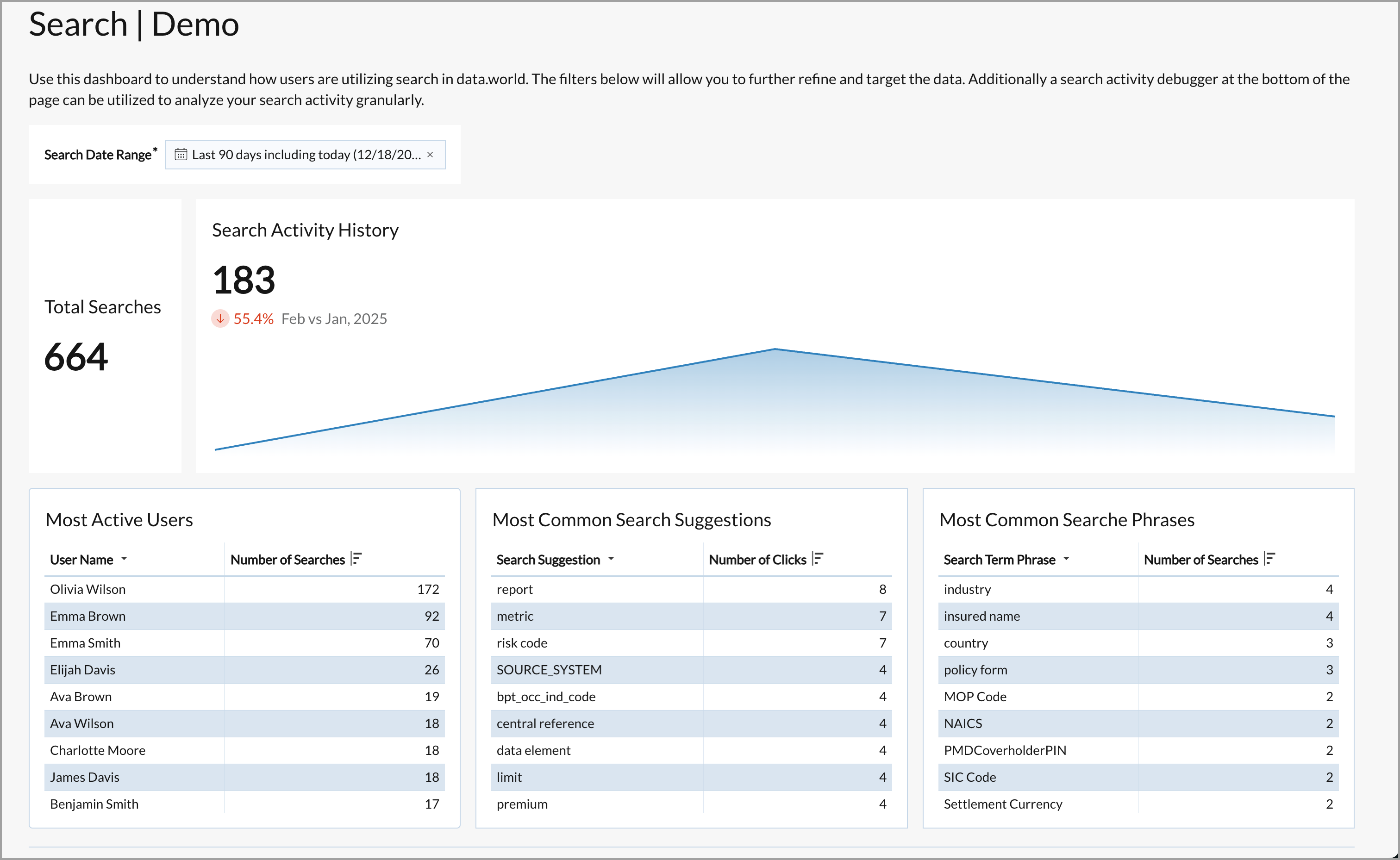
Key search dashboards
Explore the following dashboards with key metrics available on the Search dashboard page.
Search metrics
This section tracks overall search volume and trends, helping monitor engagement and detect usage patterns.
Dashboard | Details | Source for the dashboards |
|---|---|---|
Total Searches | Displays the total number of searches within a selected period, helping track search engagement and volume. |
|
Search Activity History | Shows trends in search usage over time, allowing users to identify increases or decreases in search activity. |
|
Most Active Users | Highlights users who perform the most searches, helping recognize power users and engagement patterns. |
|
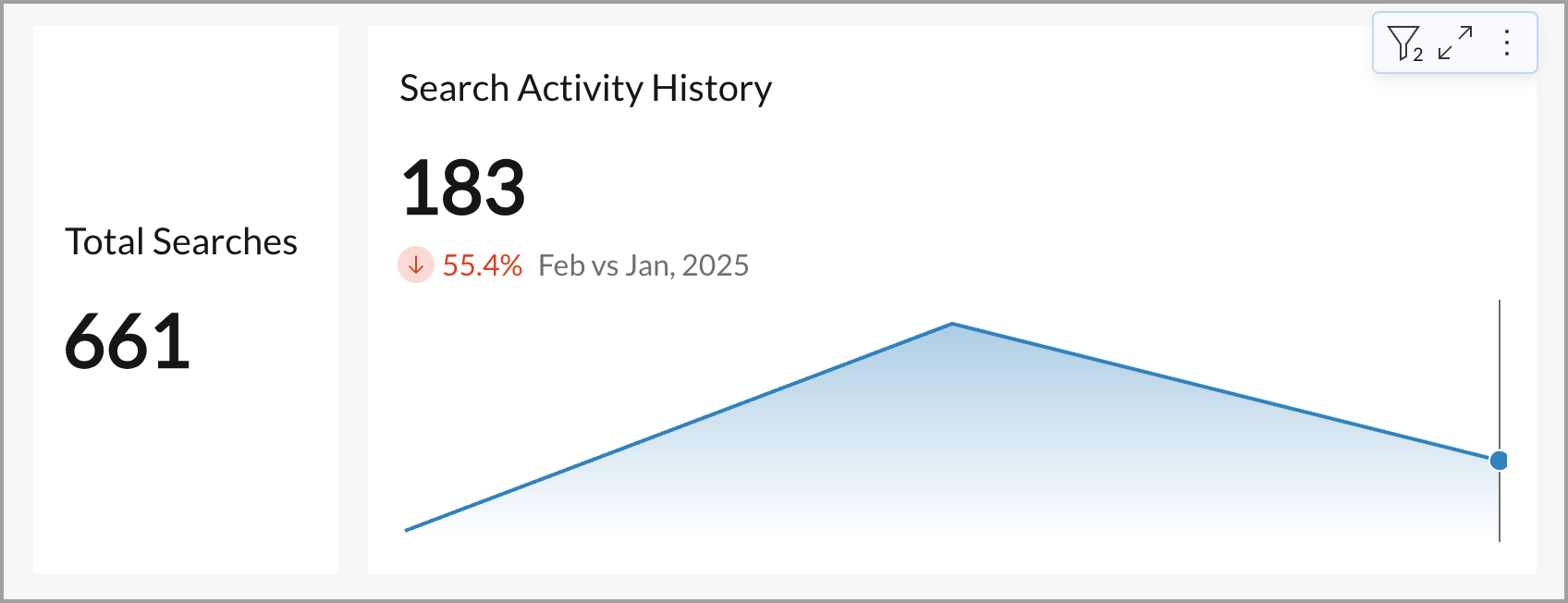
User search behavior
Understand how users interact with search by analyzing their queries and behaviors:
Dashboard | Details | Source for the dashboards |
|---|---|---|
Most Common Search Suggestions | Identifies frequently clicked search suggestions to understand which are most useful to users. |
|
Most Common Search Phrases | Highlights popular search terms used by users, providing insights into what users are searching for. |
|
Granular Search Activity | Logs detailed events of individual searches, search types, and user details, enabling deeper analysis of specific search behaviors to refine and improve search performance. |
|
Searches (w/ Results) | Drill down into search results by username, search phrase term, or search type. |
|
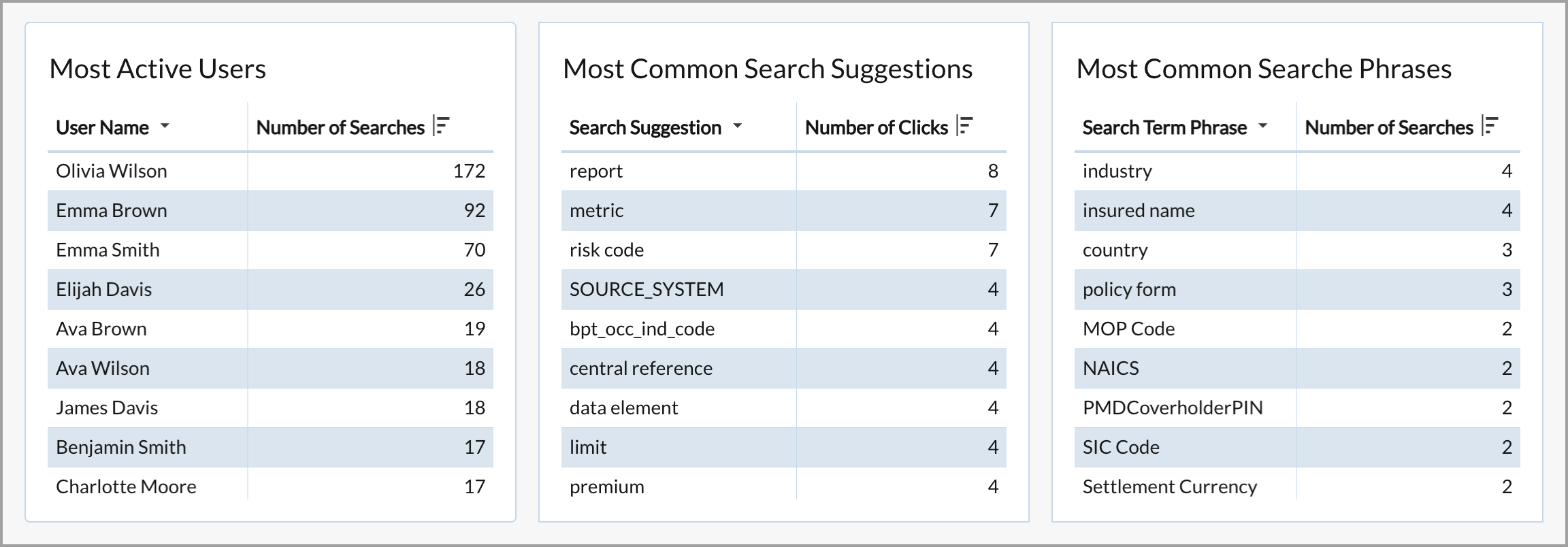
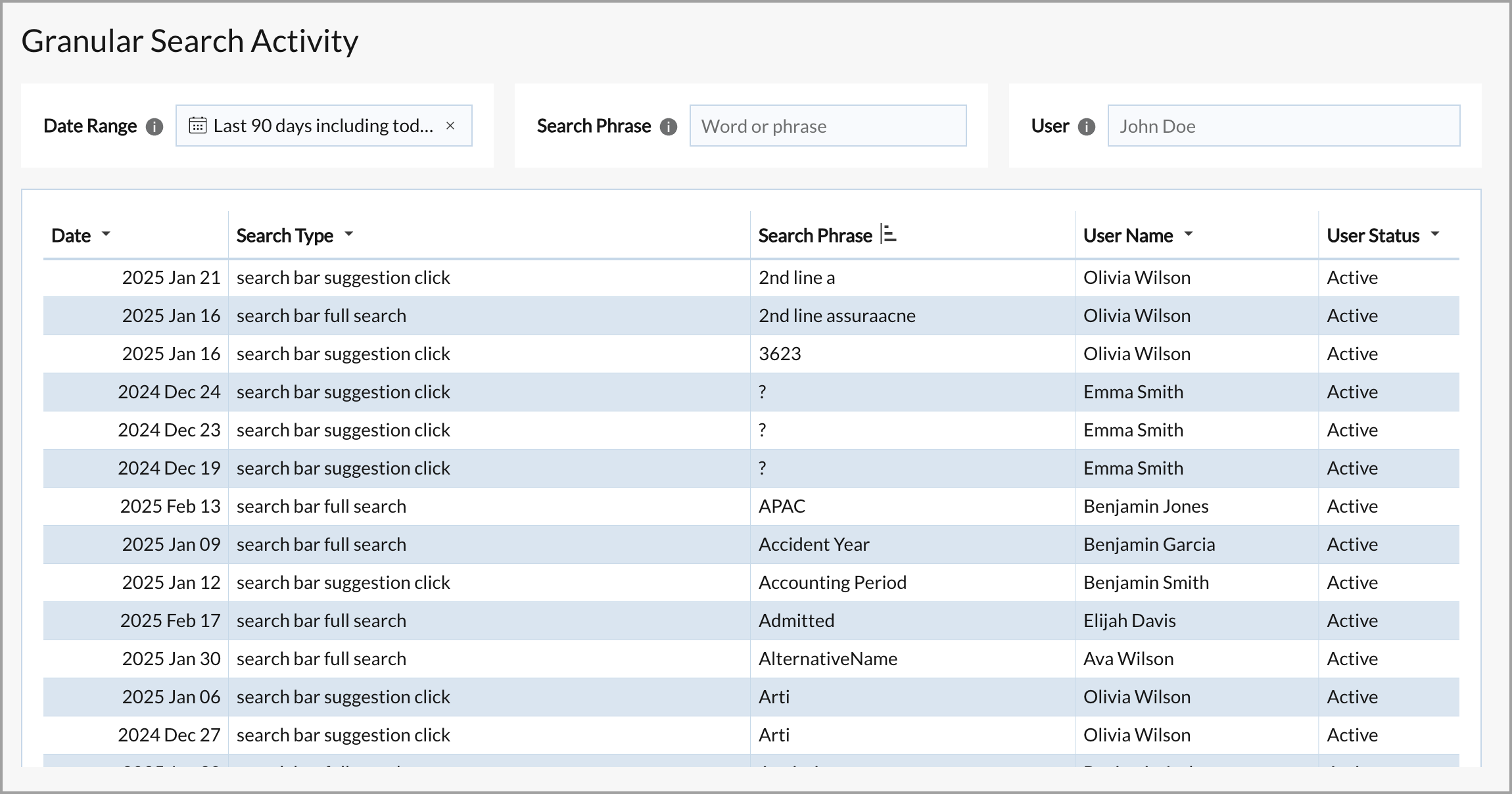
Exploring search activity on the dashboard
To explore search activity on the dashboard:
Go to the Dashboards page and click Search in the left pane.
The dashboard displays key search activity metrics.
To export the entire dashboard view, click the Export dashboard button. This captures a snapshot of all visible widgets and applied filters as a PDF — ideal for sharing, reporting, or archiving. For details, see Exporting dashboards
To export data or visualizations from individual dashboards, hover over any widget and click the Three-dot menu > Export. Available formats include CSV, JSON, Excel, PNG, and others.
Use the Search Date Range filter to set a global date range for all displayed metrics. Click the dropdown and select a predefined range (for example, Last 90 days). Check Include today to include the latest data.
Hover over Total Searches dashboard or Search Activity History dashboard, click the Three dot menu, and select Export > Copy to clipboard to copy the data. The copied data reflects values such as:
For Total Searches dashboard: Row Count 664.
For Search Activity History dashboard: Row Count 168 Feb vs Jan, 2025.
Click the Three dot menu in any dashboard and select Refresh data to update the dashboard.
To expand a specific dashboard, hover over it and click Maximize Element. The expanded view shows a detailed view of the underlying data of the dashboard elements.
Filtering and analyzing search trends
To filter and analyze search trends:
To apply a filter on all dashboards on the page, click the Global Filters button. In the Global Dashboard Filters window, select from the following:
Select Exclude Users by Selection to remove specific users from the dashboards.
Use Filter Users by Email Text to filter out users by specific criteria.
To use the filters for specific dashboard, hover over a dashboard and click Filters.
Each dashboard includes filter options to customize the displayed data. Hover over a dashboard and click Filters to access available settings:
Search Type: Select the type of searches displayed.
Search Date Range: Define a custom timeframe.
Number of entries: Adjust the number of displayed results. This setting applies to Most Active Users, Most Common Search Suggestions, and Most Common Search Phrases.
Sort and organize data: Click the Column header name in the dashboard. In the dropdown menu, do the following:
Use the available sorting options to arrange the data.
Click Column details to view summaries and insights about a specific column.
Copy and analyze data:
Right-click any value inside a table and select Copy to clipboard to copy specific data values.
To view total values, right-click and select Show all totals. For example, total searches by the most active users.
For a deeper dive into search behavior, use the Granular Search Activity Analysis table. You can adjust the following filters:
Date Range: Select a timeframe for when searches occurred.
Search Phrase: Enter a keyword to filter searches by a specific term.
User: Provide a user name to filter by user activity.
Exporting dashboards
You can export the entire dashboard view as a PDF file. This is useful for sharing dashboard insights with others, archiving reports, or including snapshots in presentations.
The export captures all visible charts and widgets on the page, along with any filters that are currently applied.
To export the dashboard as a PDF:
Apply filters to customize the data shown in the export. For example, you can filter by date range, resource type, or specific metrics to tailor what appears in the final PDF.
Click the Export dashboard button at the top of the page.
The PDF file is saved automatically to your local device. The export reflects the current visible state of the dashboard, including all applied filters and settings.
